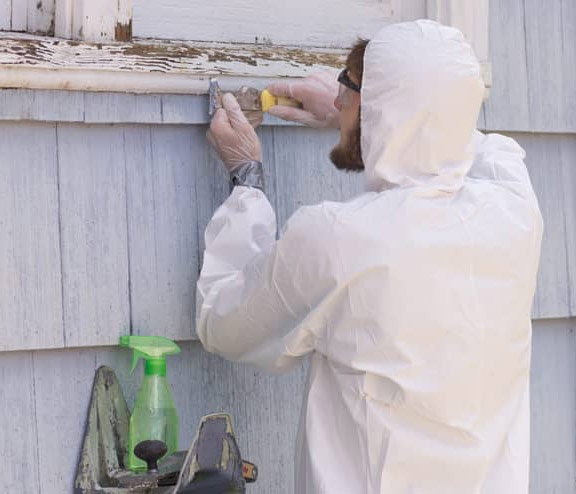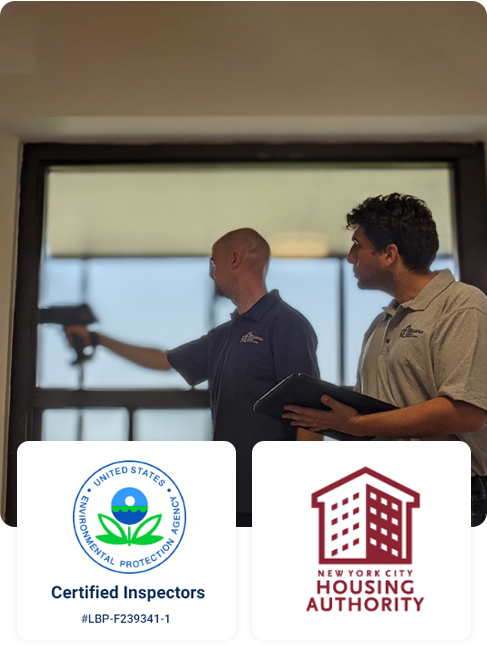Step-by-Step Refine for Successful Lead Offense Remediation
Dealing with lead infractions demands a careful and structured approach to guarantee both safety and regulatory compliance. The journey starts with the exact discovery and evaluation of contamination sources, using innovative analysis devices. Following this, adherence to federal and state policies is critical to formulating an efficient remediation plan. Such a plan must information the certain methods and timelines for activity. The actual remediation needs skilled personnel to implement these strategies while strictly complying with security protocols. What occurs after the removal is completed? The response depends on recognizing the essential post-remediation techniques that guarantee long-term safety and security and area health.

Detection and Analysis
Detection and analysis are important action in the remediation of lead offenses. To guarantee a reliable remediation process, it is important to carry out a comprehensive evaluation of the setting where potential lead direct exposure exists. The first phase of detection involves recognizing sources of lead contamination, which can be discovered in paint, water pipelines, soil, and dust. Using advanced diagnostic devices such as X-ray fluorescence (XRF) analyzers and atomic absorption spectroscopy (AAS) can provide exact dimensions of lead concentrations.
This includes evaluating the level and extent of contamination, as well as identifying populaces at risk, specifically youngsters and expectant females. The gathered data need to be diligently recorded to support the advancement of an effective remediation approach.
Furthermore, it is important to prioritize areas with the highest degree of contamination and those that position the biggest wellness dangers. Effective interaction with stakeholders, including residential property owners, residents, and public health and wellness authorities, is important for ensuring that all events are informed concerning the searchings for and the subsequent actions required for removal. This preliminary discovery and analysis stage prepares for an effective lead violation removal process.

Lawful and Regulative Compliance
Navigating the landscape of lawful and governing conformity is a critical facet of effective lead infraction removal. Compliance ensures not just the safety of damaged populations but additionally the integrity and legal standing of the company in charge of removal. Laws governing lead contamination are complex, encompassing government, state, and local regulations. At the federal degree, the Environmental Defense Firm (EPA) sets strict criteria under the Poisonous Substances Control Act (TSCA) and the Lead-Based Paint Renovation, Repair Work, and Paint Guideline (RRP Regulation)
State and neighborhood regulations can vary, commonly enforcing added responsibilities or even more rigorous standards. A detailed understanding of all pertinent lawful structures is vital. This involves precise paperwork of all remediation activities to demonstrate conformity. Failing to follow these regulations can result in severe penalties, consisting of substantial penalties, lawsuit, and reputational damages.
Involving legal experts specialized in ecological legislation can facilitate navigating these intricacies. Routine training and certification for all employees entailed in the removal process are also obligatory to ensure adherence to safety and security and regulative standards. By focusing on legal and regulative compliance, companies can successfully reduce dangers and attain an effective remediation end result.
Planning the Removal
Successfully preparing the remediation of lead violations begins with a complete analysis of the infected website. This preliminary assessment must include a comprehensive website investigation to recognize the extent and focus of lead contamination. Comprehensive sampling and research laboratory analysis are extremely important to create an exact contamination profile. This data-driven technique makes sure that remediation initiatives are suitably targeted and effective.
When the contamination is mapped, a threat assessment need to be conducted to examine possible health risks to people and the atmosphere. Lead Violation Removal in NYC. browse around this web-site This evaluation should take into consideration factors such as exposure pathways, population susceptability, and eco-friendly impacts. The insights gathered will form the basis for choosing an ideal removal approach
Subsequently, setting clear, achievable purposes for the remediation job is vital. These purposes need to straighten with governing requirements and stakeholder assumptions to make certain conformity and area approval. Establishing an in-depth removal plan that details techniques, timelines, and resource allowance will help with a structured method to the cleanup process.
Moreover, it is important to engage with stakeholders early and maintain transparent interaction throughout the preparation phase. This includes informing neighborhood neighborhoods, obtaining necessary permits, and collaborating with regulative companies to ensure all lawful and step-by-step requirements are met. A well-crafted remediation strategy not only addresses the contamination effectively yet also constructs depend on and teamwork among all events included.
Performing the Remediation
With a well-structured removal strategy in position, the emphasis shifts to the real execution of the removal activities. This stage includes mobilizing the essential resources, consisting of proficient employees, specialized tools, and top notch materials. Begin by plainly defining roles and duties to guarantee liability and seamless control among employee.
The first action in implementation is to secure the site. This consists of establishing up control locations to avoid lead dirt and read the article debris from spreading, in addition to using air purification systems to maintain air high quality. Next off, proceed with the removal of lead-based products. Use approaches such as wet scuffing, chemical removing, or encapsulation, relying on the seriousness and area of the contamination. It is imperative to abide by security methods, including the use of personal safety equipment (PPE) and appropriate disposal of harmful materials.
Throughout the remediation procedure, conduct regular evaluations and air quality monitoring to make sure conformity with governing criteria. Reliable interaction with stakeholders, including building proprietors and residents, is vital to maintain them educated of progression and any kind of unforeseen growths. By meticulously adhering to these actions, the removal tasks can be carried out effectively and efficiently, eventually mitigating lead risks.
Post-Remediation Techniques
Post-remediation techniques play a vital role in ensuring the long-lasting success of lead infraction remediation initiatives. These approaches include continuous monitoring, upkeep, and area education and learning to avoid future lead direct exposure and guarantee a safe setting.
First, regular monitoring is crucial. This entails regular screening of the formerly affected areas to make sure that lead levels remain within secure limitations. Homeowner should develop a routine for these examinations, ideally in collaboration with licensed environmental specialists.

Third, informing the neighborhood plays a pivotal duty in sustaining the advantages of remediation. Homeowners and building managers need to be educated regarding the threats of lead exposure and the most effective methods for maintaining a lead-safe atmosphere. Workshops, informational pamphlets, and neighborhood meetings can be efficient find more information devices for distributing this details.
Conclusion
Effective lead violation remediation requires an extensive, methodical technique encompassing detection and assessment of contamination, adherence to legal and regulatory standards, precise planning, and efficient implementation of removal initiatives. This systematic procedure emphasizes the relevance of thoroughness and alertness in dealing with and alleviating lead contamination.